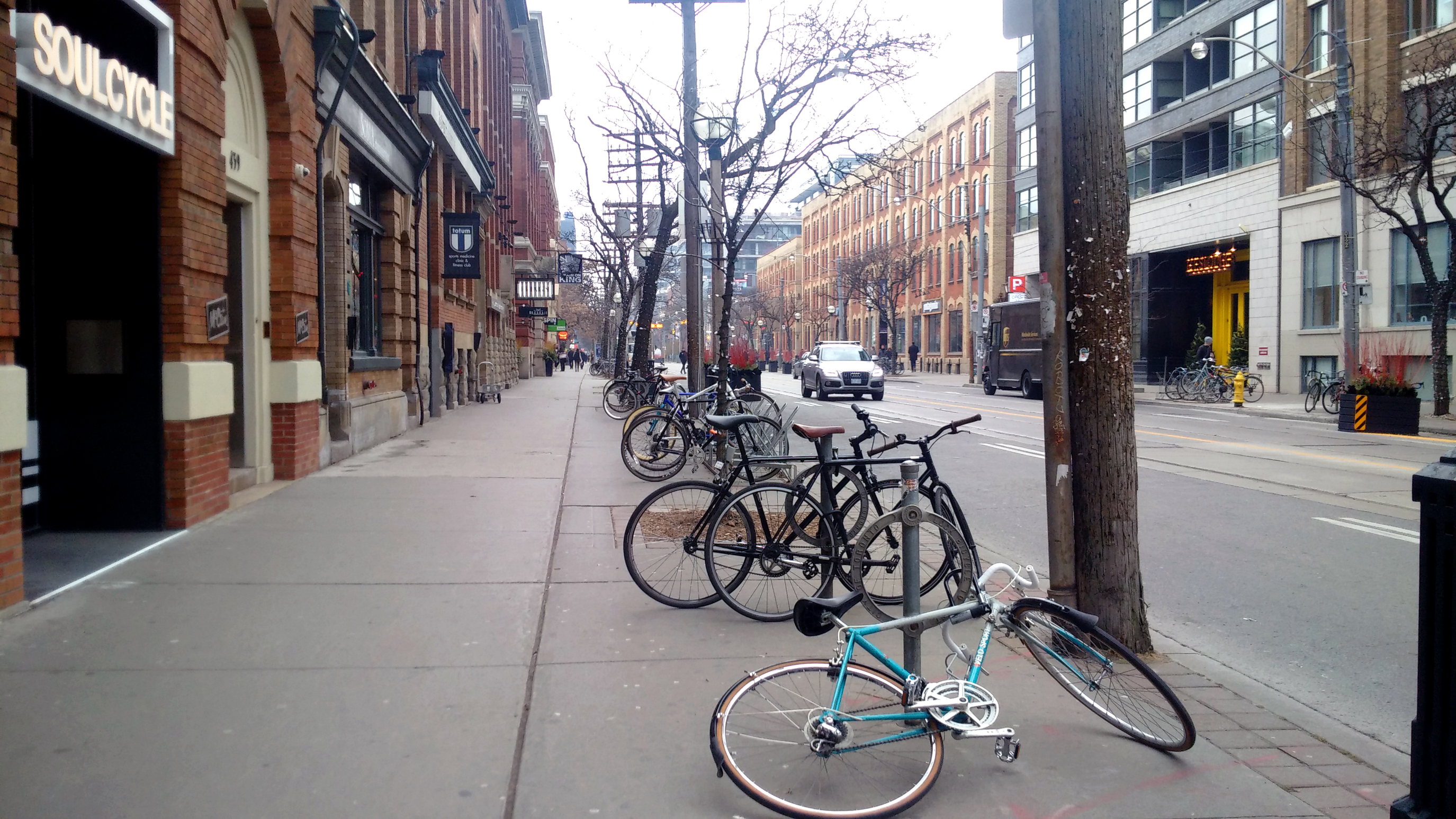

On Human Trafficking in Canada and Beyond: Part One.
Of all the human tragedies that occur in our modern-day society, it seems none match the inhumanity of sex trafficking. Poverty, still a condition and a narrative for billions, is not quite the demonic contrivance that human trafficking is—especially trafficking aimed at sexual exploitation.
Yet, experts on human trafficking say it is poverty (both domestic and abroad) that predominantly serves as the circumstantial setting for trafficking to even exist in our communities.
How far have we come if the forced submission of another, the ownership of another, is transacted like cattle at an underground auction? Sex trafficking holds a particularly nasty stain on our collective, at least, it should. It should fill any conscientious person with sleepless nights, yet collectively, we appear to be in denial.
To borrow a Gandhian quote: “The greatness of a nation and its moral progress can be judged by the way in which its animals are treated”. By extension, can we not say the same of a nation’s human inhabitants? What chance do the animals have if humans pawn each other like used guitars and gold watches. For all the troubles that recycle themselves in the news, so few compare to the seriousness of these unconscionable acts.
What many don’t know, is that much of sex trafficking isn’t necessarily confined to backward parts of the world as they occur in large part inside one’s borders. If asked, most would say—likely the result of Hollywood’s influence—that human trafficking is solely an eastern European problem; or, a netherworld issue in exotic parts of Asia that are too shadowy and distant to even register.
For this writer, it is beyond comprehension how we pursue normal day-to-day endeavors knowing that this continues so surreptitiously and with limited outrage; not only domestically, but throughout patches of the world where this still manages to operate outside our digitally surveilled communities.
If the idea of people being bought and sold like tuna at Tsukiji market isn’t enough to get people motivated, it’s a wonder where we’re headed as a species.
Yes, Human Trafficking Is A Canadian Problem.
In Canada, detailed research was done on human trafficking, particularly on its extent as a national phenomenon. To find out the extent of it, The Canadian Women’s Foundation commissioned a National Task Force in 2014 to detail the goings-on of sex trafficking in Canada, producing a detailed report entitled, ‘“No More”— Ending Sex-Trafficking In Canada: Report of the National Task Force On Sex Trafficking of Women and Girls In Canada’. We’re now approaching the report’s decade anniversary, but the following will highlight some of its findings as an intro to the subject.
[Aside: Reaching out to organizations for information on this subject proved difficult, this includes attempting to get interviews or data/research material, as these organizations rightfully approach inquiring visitors with suspicion. Some of what is relayed from the report will be slightly dated, however, the overall goal is still the same.]
The results were eyeopening as it unveiled a long list of troubling facts. Trafficking is an obvious fundamental human rights violation, but that doesn’t stop perpetrators from capitalizing in what is pursued as a hugely profitable criminal practice. The report details what the RCMP estimates to be a lucrative exercise as “traffickers in Canada can receive an average annual financial gain of $280,000 for every women or girl they have trafficked”.
The report in itself is a difficult one to read, and will likely make any reader pause; not necessarily to reflect on the facts, but simply to regain composure before reading on. Even if a victim is rescued from isolation, for which the perpetrators are known to use as a tactic to suppress any attempts by those they have enslaved, the psychological scars can be lifelong.
Secondary to the emotional costs, by some distance, are the financial costs, and then others by proxy. The financial costs, although impossible to estimate for those borne by the victim, also have what the report calls “Third Party Costs” or those essentially taken on by society; these figures and categories (medical, legal, short or long-term housing, job training programs, etc.) can be somewhat quantified. These figures also do not include estimated lost-earnings costs which siphon a community, as legal, social assistance, long-term mental health support and inter-generational total costs are unknown.
The root causes often look the same, that those who are trafficked are vulnerable due to their socioeconomic status; lack an education; have a history of violence and/or neglect; a history of child sexual abuse; and that poverty as a whole contributes to the likelihood of someone being trafficked. However, the report explicitly details that those from “affluent” communities are targeted as well and also fall victim to the heinous, predatory nature of traffickers.
In Canada—and perhaps this should be noted as an additional crises—the numbers of those affected are skewed towards the Indigenous segments of the population. Indigenous groups are noticeably more affected throughout Canada, and there are numerous reasons why this could be the case as noted in the report: isolated rural communities; communities that have endured decades-long neglect or what the report calls “community trauma”, all of which contribute to the mire that is poverty—again, the most prevalent of root causes for the trafficking of women.
One of the more grisly statistics (from a survey taken by the Native Women’s Association of Canada) was seeing how young girls, some 50%, were recruited between the ages of 9 – 14. 87.5% had already been sexually abused before being trafficked. More shocking is that victims who were surveyed say that, “71% reported to have sex with doctors, 60% with judges, 80% with police, and 40% with social workers.” That is to say, those we assume to be in positions of power, roles deemed to aid the most vulnerable in society are in large part contributing to the demise of those they have sworn to help and protect.
“71% reported to have sex with doctors, 60% with judges, 80% with police, and 40% with social workers.”
According to the report, one of the more growing trends is that, ‘traffickers have become more subtle’ in what one anonymous victim in the report describes as the sly, changing role of their captors: “I wouldn’t say there are pimps anymore. Now they’re all boyfriends.” This adds a legal twist in proving one’s victimhood in the Canadian courts. ‘Trafficking is less visible,’ as a result of technology, although, now slightly dated, the report notes that trafficking has become profitable due to the Internet and websites like ‘backpage.com’ (no longer in existence), which at the time was garnering nearly 4 million unique visitors a month. The site was a hub for perpetrators and their clients. (More on ‘backpage.com’ in Part Two).
The report goes on to note international and domestic differences that enable these tragedies:
Internationally, the report shows that the structural factors that enable these tragedies to occur include: Armed Conflict; Political Instability; Forced Migration; Fraudulent Employment Agencies; (and the most disappointing of all) Police Corruption.
Domestically, notable risk factors include: Fraudulent Employment Agencies; Transient Males; Poor Police Training; Gangs.
One detail that stood out from the report is that, “service providers who are not able to identify or respond to signs of trafficking” can contribute to high risk environments. In other words, or rather, in one word, ‘neglect’ is what creates these ugly scenarios.
In communities (or countries) that lack options for work and livable wages where groups of people live in perpetual poverty and fear, predators will likely lurk, manipulate, emotionally ensnare and then ultimately physically trap and quite literally take identities away from their victims.
Some victims over time have what is known as a “trauma bond” with their trafficker, which is a particularly nasty entanglement, as it, let’s say, emotionally circumvents the victim’s ability to distinguish moral boundaries, preventing them from acknowledging their situation in a truthful manner, and hence preventing them from breaking free.
But as perpetrators take the blame, it seems the buyers are equally as heinous. According to the report, the buyers are ‘mostly married or in common-law relationships, employed and middle-class’ who see these women as inferior and undeserving of basic dignity.
What’s Being Done To Stop This From Continuing?
Here are some of the strategies that are being pursued, which include Canada’s National Action Plan. Canada, after ratifying the UN’s Palermo Protocol, is focusing on housing, educating, counseling (“in a language trafficking victims can understand”); providing medical and psychological assistance; employing as well as providing compensation for the victims. Current plans and funding also focus on preventing re-victimization and overall policing of the human trafficking situation in Canada (e.g. Human Trafficking National Co-ordination Centre). It is now a criminal act to traffic in Canada under the Immigration and Refugee Protection Act and the Criminal Code.
The NAP is one of training, research, data collection and “knowledge exchange” with partnerships both domestic and international. The NAP seems to focus more on international trafficking as millions are being spent to train Canadian Border Service Agents. There are various other initiatives including pilot programs that are aimed at enabling public awareness (a key factor in prevention) and a national tip line, Cybertip.ca , which is mostly used for child abuse (images), but the tip line will take reports regarding the trafficking of women and girls.
Finally, the report claims that there isn’t a “single coordinated effort to prevent trafficking” in a public awareness sense. Surprisingly, Canada does not have the “housing, counseling, health, employment and other services” that is required by the Palermo Protocol.
Why? What strategies are there to rid of these deficiencies?
[While researching this topic for an article, female friends have asked if there is something they can do to reach out to female victims of human trafficking, wanting to help in whatever way they can through emotional support, post-trauma and/or in while transitioning to a life that resembles something more normal in their newly adopted country. This will be an ongoing question, as it seems highly unlikely, and something to return to in Part Two of this essay article.]
A few years ago marked the twenty year anniversary since the Palermo Protocol was adopted. It takes a more thorough and complicated look at combating trafficking and modern slavery on a global scale.
When pivoting the lens outside of Canada, vulnerabilities and mounting concerns made mostly by technology are also ironically solvable with technology. Dr. Jean Baderschneider’s article on the subject—published on the Palermo Protocol’s anniversary on the Council on Foreign Relations website—illustrates some of the highlights and shortcomings of what the protocol has done to alleviate ongoing issues of trafficking and modern slavery.
Now, with the war a year old in Ukraine, there have been concerns, especially early on, about human traffickers taking advantage of an already horrible situation along the assumed safe corridors between the borders of Ukrainian’s eastern European neighbours. Their neighbours have openly and willingly helped with open arms the desperate, and might have—in their haste to aid and house refugees—unwillingly been unable to assess any blind-spots as mass groups, mostly women and children, traversed these lands.
These are possible untold horrors that are occurring in the shadows as the news cycle focuses on the politics, casualties and consequences as a result of the war.
The question that should be asked is: Is anyone watching over this with purpose?

















